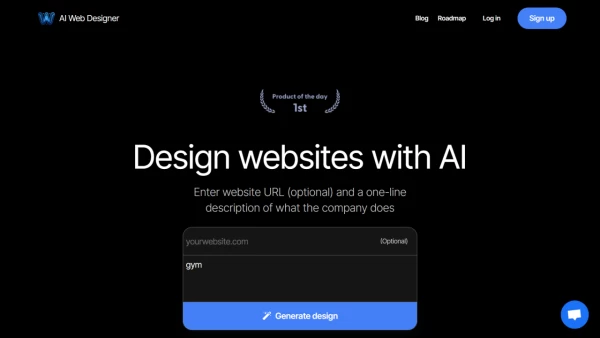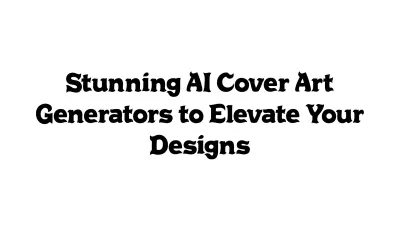What is Algorithm-Driven Design?
Explore the evolving landscape of design through the lens of artificial intelligence. This resource compiles practical examples and insights into how algorithms, neural networks, and machine learning are reshaping design processes. It delves into the potential of AI not as a replacement for designers, but as a powerful collaborative partner, enhancing creativity and efficiency in areas like user interface construction, asset preparation, and user experience personalization. Discover how technology is augmenting the capabilities of modern product designers.
Understand the concept of "Algorithm-Driven Design" through a curated collection of real-world applications and tools. The site categorizes examples across UI construction, asset and content preparation (including copywriting and imagery), UX personalization, and graphic design. It also touches upon related disciplines like industrial design and entertainment, providing a comprehensive overview of AI's impact. Learn about the potential benefits, such as automating routine tasks and broadening creative exploration, alongside considerations like ethical implications and the need for human oversight.
Features
- Curated Catalog: Provides a structured collection of AI tools and examples relevant to design.
- Categorized Examples: Organizes AI applications into specific design areas like UI Construction, Asset Preparation, UX Personalization, and Graphic Design.
- In-depth Analysis: Offers commentary and insights into the implications and potential of algorithm-driven design.
- Resource Aggregation: Links to articles, research papers, and tools for further exploration.
- Focus on Collaboration: Frames AI as an assistive technology ("exoskeleton") enhancing designer capabilities.
Use Cases
- Researching AI applications in design.
- Finding examples of AI tools for specific design tasks (e.g., logo generation, image stylization, copywriting).
- Understanding the impact of AI on the design profession.
- Exploring the concept of generative design.
- Learning about machine learning and AI concepts relevant to designers.
- Discovering tools for automating design routines.
- Staying updated on AI advancements in creative fields.
FAQs
-
Will AI replace designers?
The site suggests no, framing AI as a collaborative tool or "exoskeleton" for designers, automating routine tasks and enhancing capabilities rather than replacing core creative and strategic roles. -
What is algorithm-driven design?
It refers to using algorithms, often powered by AI and machine learning, to assist in various design tasks like UI generation, asset creation, content writing, and UX personalization, often involving collaboration between the designer and the algorithm. -
What are some examples of AI in design?
The website lists numerous examples, including AI for generating website layouts, creating thumbnails/posters, writing copy (like ChatGPT), generating images from text (like DALL-E 2), stylizing photos (like Prisma), personalizing content layout, and generating logos (like Logojoy). -
What are the benefits of using AI in design?
Benefits include removing routine work, enabling experimentation with UI/patterns, broadening creative exploration, quickly adapting designs for different platforms, and potentially improving design culture through better understanding and automation. -
What are the potential downsides or ethical concerns of AI in design?
Downsides include the cost of custom solutions, potential difficulty breaking past existing styles, ease of copying work, the need for human oversight to avoid mediocre results, and ethical questions about authorship, value, and potential biases in AI models.
Related Queries
Helpful for people in the following professions
Featured Tools
Join Our Newsletter
Stay updated with the latest AI tools, news, and offers by subscribing to our weekly newsletter.












